Arctic Roll
A festive frolic through aspects of the Arctic climate
Between 2017 and 2020 I reckon I spent more time analysing all things Arctic than all other climate topics put together. The reason for this is simple: the Arctic is the poster child of alarmism and a place where globalist-funded journalists can take sensational photographs to prove to the world that things are really bad and getting badder.
By way of example, here is a smashing photo of a bay in Greenland that was taken by a journalist in June 2019, who swore the same area was chock-a-block full of thick sea ice the year before:
This is meant to shock us into despair and a good many folk will no doubt have fallen for the powerful graphical narrative. Now the interesting thing here is that the journalist’s claim was entirely truthful, but what they omitted to tell their readers is the fact that sea ice completely disappears in this bay each and every year in the summer, and returns again in the winter. In fact, if they were doing their job properly, they’d go on to inform readers that 60% - 70% of all Arctic sea ice melts during the warm season every year only to return the next – a topic that I shall be chewing over in the New Year.
The Great Calving Swindle
Another Arctic antic that ardent alarmists like to air is to show astonishing footage of great walls of ice crashing into the sea as proof of rapid melting of the ice sheets. This is called ‘calving’ and it shows the exact opposite; it is visual proof of ice sheet expansion:
When millions of tons of snow fall onto land-locked ice sheets each winter the sheer weight compacts the snow into ice, which then slowly flows downward and outward in plastic fashion toward the coast until it calves into the sea. What we’re looking at when we see dramatic footage of ice cliff collapse is not evidence of Arctic warming and ice melt but the aftermath of heavy snowfall over the interior inducing ice sheet growth. We may conclude that alarmists are very good at inverting reality.
How Hot Is Santa?
Logic would dictate that if Arctic sea ice is melting away over time then Arctic seas must be getting warmer over time. Equally, we may assume that if glaciers and ice sheets are melting away over time then Arctic land surface temperatures must be getting warmer over time.
As a precursor to a forthcoming mini study I thus accessed KNMI Climate Explorer to provide mean annual temperature anomalies (TAVE) for all 280 GHCNd weather stations located within the Arctic circle with at least 30 years of contiguous data. What dropped out onto the screen caught me completely by surprise. Take a look at this:
It should be abundantly clear that the Arctic (in terms of average land surface temperature) was far warmer way back than we have been led to believe. Quite a shocker, innit? In fact, according to this graph, mean land temperatures are only just beginning to reach those recorded 100 years ago!
This being the case we should expect to see stories of a melting Arctic in the press of yesteryear, and we indeed do so. In this regard I highly recommend folk scour Tony Heller’s magnificent YouTube channel for press clippings confirming dramatic loss of sea ice, glaciers and ice sheets back then. Herewith an example:
Back in the pre-pandemic halcyon days of 2019 I worked through old reports and historic data to cobble together a picture of what Arctic sea ice has been doing over a decent length of time (as opposed to the limited NSIDC satellite data series that starts in 1979). I slapped together the following composite slide, which has remained one of my favourites ever since.
The trick here was to utilize two Russian sea ice studies that have thoughtfully been translated into English (an uncommon event), thence to combine charts using a vector graphics package to eke out a common scaling:
Yes it’s rough but it is rather tasty and there’s a great deal more I shall say about this in forthcoming articles, but for now I trust that it will suffice as a colourful yet informative tapestry. Our take home festive message is that Arctic sea ice has been coming and going in cyclical fashion for decades, and so we discover that the current melt phase is nothing new.
All that alarmists are doing (and this includes some very serious scientist who ought to know better) is to focus on the downward phase of the current cycle and conveniently claim all is due to fossil fuel consumption. Obviously this cannot be the case - something other than atmospheric CO2 is driving glacial and sea ice melt phases in the Arctic.
We may conclude that Santa alternates between being hot and cold every few decades and that the Arctic steadily loses then gains ice mass, much like his belly that shakes like a bowlful of jelly. This pattern will continue regardless of political shenanigans, ostentatious virtue signalling from the woke, and academic posturing from the grant-laden undead.
There’s No Business Like Snow Business
When we think of Santa at the North Pole we are likely to also think of reindeer and lots of snow. According to the very best alarmism snow is now supposed to be a thing of the past, with no children getting to enjoy the stuff. In our neck of the woods down in the cosy South West of England snow isn’t normally a big deal but it certainly was back in 2009, 2017, 2018 and 2019, and here are wintry snaps to prove it:
So what about snowfall in the Arctic? Well, we can once again turn to the rather handy KNMI climate explorer and weed out data for the 57 GHCNd Arctic stations that have kept contiguous snowfall records for a minimum of 30 years. Here’s a screenshot of the mean annual anomaly for snowfall at those stations:
We may deduce that some very expert alarmists are talking out of one of their orifices and I don’t think it is their mouth. Arctic snow is on the up folks, which will mean steady expansion of ice sheets and glaciers, but don’t hold your breath - this process will take a few decades to show!
Kettle On!


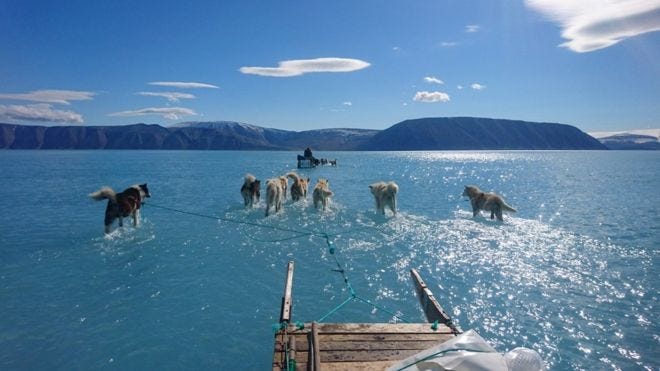
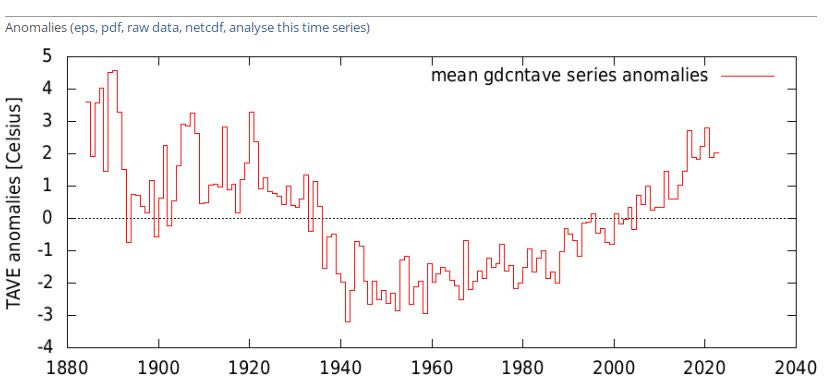
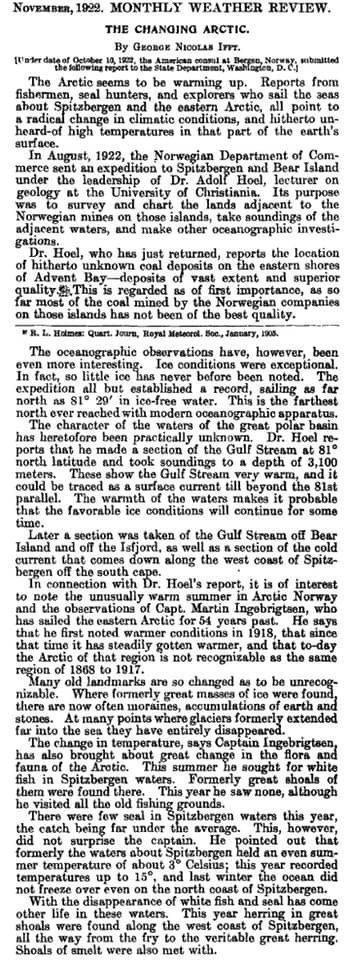

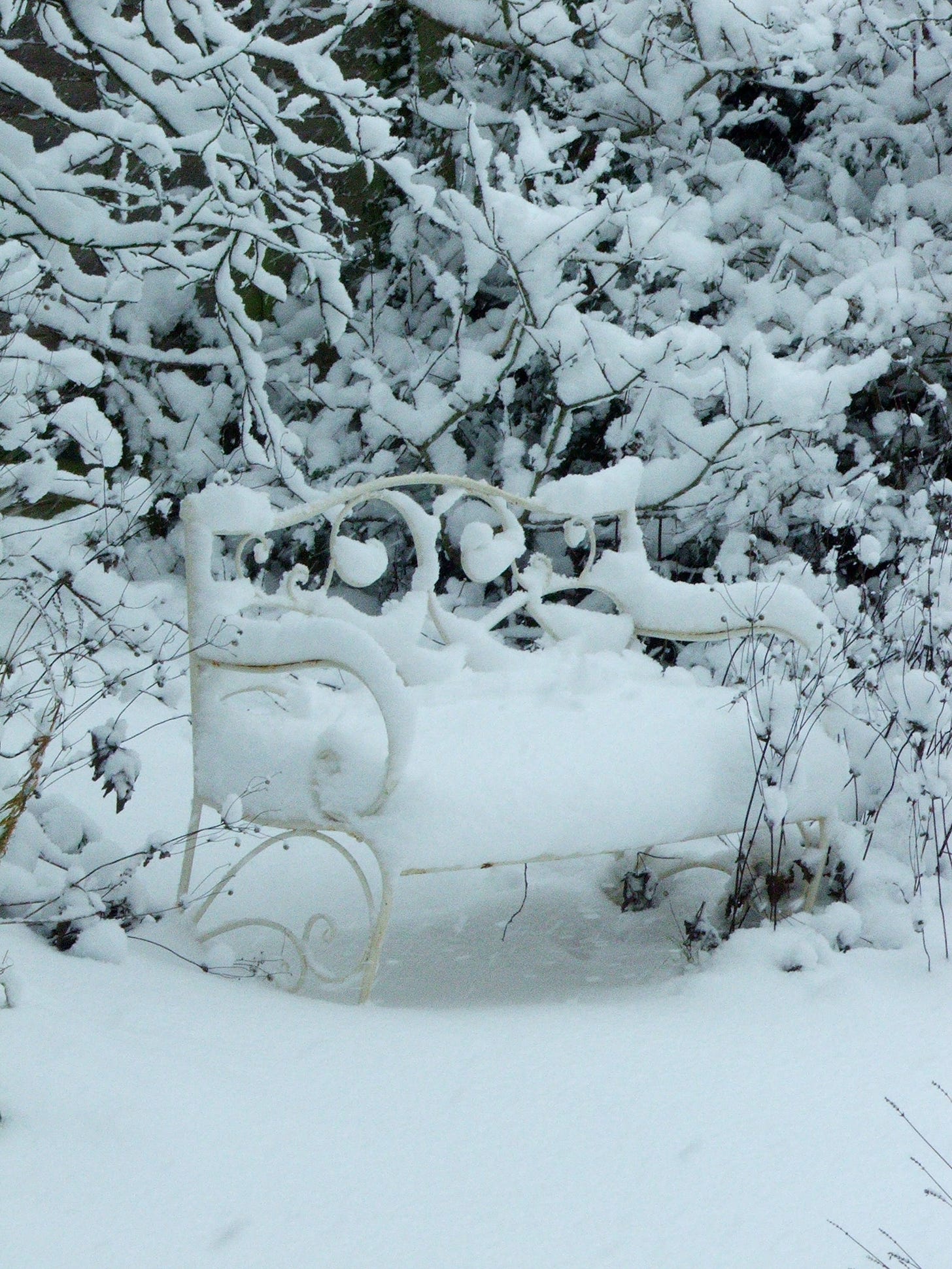


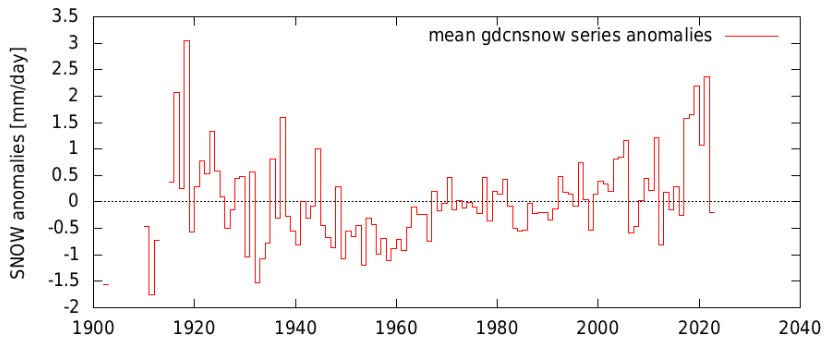
I am a financial adviser and when I first came into the industry many, many years ago I started collecting, every December, the outlook for the next year for financial markets. I quickly realised that these forecasts from the world's largest financial companies amounted to nothing more than 'we are going to see the same trend ie more of what is happening right now'. None of them saw the credit crunch coming. It turned out, upon further delving, that at a psychological level it is better to go with the crowd and be wrong collectively rather than be the one contra voice who might get a forecast wrong and be scoffed at ever more which could also result in loss of future career opportunities. No doubt the same in climate science although worse because it has become something of a religion.
This article by Tony B at What's Up With That 14 years ago shows the battle for truth was lost a long time ago.
https://wattsupwiththat.com/2009/06/20/historic-variation-in-arctic-ice/
10 to 20 years ago I used to give the odd short lecture at U3A Science & Tech groups and similar ( I am a bog standard Met Guy). I took to prefacing my presentations with a statement appealing to those present to recognise that what I was showing was official commonly agreed data, not contentious or opinion. Even so I would receive abuse because the data would show things, like the extent of Arctic sea Ice, that would be contrary to the "approved" perception. And remember that most of those attending have science or engineering backgrounds and a lifetime of application. If you can't show an engineer empirical data without pushback!!??